Avoiding Another Cold War
Relations with Russia haven't been this frosty since there was an East Berlin. President Obama may be distracted by other priorities, but getting reacquainted with Vladimir Putin and his nuclear arsenal should be at the top of the list.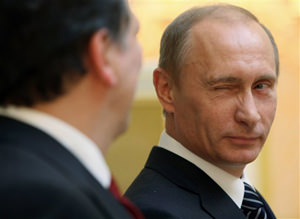
“If it’s not just words, if they are transformed into practical policy, we will respond accordingly, and our American partners will immediately feel that.”
These are the words of Russia’s strongman prime minister, Vladimir Putin, spoken during a program nationally televised in Russia shortly after Barack Obama won the 2008 presidential election. Putin was responding to a question about whether he thought U.S.-Russian tensions would ease under new American leadership. Putin, and his successor as Russia’s president, Dmitri Medvedev, had spent the past few years in an increasingly harsh verbal sparring match with the administration of George W. Bush. Although President Bush had once famously stated that when he looked into Putin’s eyes he could “see his soul,” the warm personal relationship between the two men froze over as the United States undertook actions Russia perceived as strategic maneuvering. Russia itself appeared to deviate from the path of Western-style democracy and free trade, which hard-liners in the Bush administration had touted as the most compelling evidence that the United States had in fact won the Cold War. Putin’s incremental return to authoritarianism was reminiscent of the former Soviet Union, complete with an increasingly centralized economy.
Russia felt threatened by what it saw as moves designed to contain Moscow: the withdrawal of the United States from the anti-ballistic missile treaty; an increased focus on the need for a missile defense shield deployed in Europe (ostensibly to counter any missile threat emerging from Iran); the aggressive expansion of NATO right up to the borders of Russia (absorbing all of the former Warsaw Pact nations, as well as several former Soviet republics in the Baltic). These actions, coupled with the U.S. invasion of Iraq and the U.S.-NATO occupation of Afghanistan, which gave the U.S. military access to bases in the former Soviet republics of Central Asia, created an image of an expanding NATO led by an increasingly hegemonic and militaristic America.
In an effort to stop the expansion of U.S. power and influence in regions close to Russia, Moscow got together with its old arch-rival, China, and entered into the Shanghai Cooperation Organization (SCO). In cooperation with four former Soviet Central Asian republics (Kazakhstan, Kyrgyzstan, Tajikistan and Uzbekistan), Russia and China put in place the mechanism for Eurasian geopolitical coordination, with a strong military component, which would keep in check not only the forces of Islamic terrorism but also America and NATO. The Bush administration at first played scant attention to this new organization, but starting in 2006 had no choice but to stand up and take notice when the SCO held a meeting with India, Pakistan and Iran in attendance as observers. Since that time, the SCO has become a major regional force which has attracted the attention of nations such as Afghanistan (even under a U.S.-led occupation) and New Zealand, a longtime U.S.-NATO ally. Central Asian nations such as Uzbekistan and Kyrgyzstan, which had previously agreed to allow the U.S. military access to its air bases, are no longer laying out the welcoming mat, and all U.S. forces are expected to leave these bases soon.
Rather than re-examining the cause-effect nature of U.S. actions and Russian counteractions, and formulating a new strategy to deal with a resurgent Russia in a manner that would reduce friction, the Bush administration instead announced its intention to deploy a ballistic missile shield, operating out of the territory of former Warsaw Pact members Poland and the Czech Republic. Ostensibly intended to deal with the emerging threat of long-range Iranian missiles targeting Europe, the missile defense shield was viewed by Russia as a dangerous escalation of the military threat posed by NATO. With a missile shield in place to defend against any surviving retaliatory capability, the United States and NATO could theoretically conduct a pre-emptive military strike against Russian targets. Russia’s protestations over this planned deployment fell on deaf ears.
In August 2008 the situation between the U.S., together with its NATO allies, and Russia worsened when Russia and the Republic of Georgia engaged in a sharp regional conflict in the Caucasus which rapidly assumed global consequences. Georgian President Mikheil Saakashvili had promised his people that he would unify Georgia by reoccupying the breakaway regions of South Ossetia and Abkhazia. In early August, Saakashvili ordered Georgian troops into South Ossetia in response to what he believed was Russian provocation. Russia responded with a massive counterattack, which not only drove the Georgian troops from South Ossetia, but carried on into Georgia proper, with Russian forces occupying the Georgian port city of Poti and threatening the Georgian capital of Tbilisi. Prior to the Russia-Georgia conflict, NATO had held internal discussions concerning membership for both Georgia and Ukraine. The Russians, by striking Georgia, made it clear that such an action would be intolerable to Moscow. The U.S. responded by sending warships, as part of a NATO naval task force, into the Black Sea. Russia in turn sent a small naval detachment, as well as a flight of heavy bombers, to Venezuela. Neither deployment represented much in the way of a serious military threat, but together they spoke volumes about the deterioration of U.S.-Russian relations under the Bush administration. But the most serious act carried out by the United States was to formalize the decision to deploy the missile defense shield in Poland and the Czech Republic. Then-Secretary of State Condoleezza Rice visited both nations and signed a formal agreement concerning the establishment of bases for the missile interceptors (in Poland) and associated target acquisition radars (the Czech Republic). Moscow responded by threatening to withdraw from not only the Conventional Forces in Europe (CFE) treaty, which placed limits on the size of the military forces that NATO and Russia were allowed to deploy in a given geographical region, but also the Intermediate-range Nuclear Forces (INF) treaty, which had eliminated both intermediate- and short-range nuclear missiles from the arsenals of the U.S. and Russia. The structures that had promoted stability through the reduction of military forces, conventional and nuclear, in Europe were threatening to crumble. The prospects for a new Cold War were very real.
This is the situation that Barack Obama faces when it comes to Russia. Of all the foreign policy problems facing the new president, the Russia issue is by far the most important in terms of U.S. national security, in both the short and long term. Neither the situation in Iraq nor that in Afghanistan possesses the seriousness of a renewal of the Cold War. In the past, the idea of a viable Russian response to NATO expansion was ridiculed by many in the United States, given Russia’s weak economy. But the Russian economy has been bolstered by vast energy supplies. Simply put, the United States cannot afford to reconvene the Cold War, since there is a real chance that it would be the American economy that would fail first. Obama must recognize this simple fact as he struggles to craft an economic recovery plan: The United States cannot afford a new arms race with Russia.
Prime Minister Putin’s insistence that American words needed to be translated into meaningful policy before Russia would act to alter its own policy direction was not just posturing. Even while President Medvedev played down the possibility of a new Cold War with the U.S., noting that Russia and the U.S. “share the same values … we need only to ensure that these values are understood in the same way,” he ordered the deployment of advanced SS-21 missiles in the Russian enclave of Kaliningrad, where they would be able to strike the U.S. missile interceptor base in Poland. That these instructions were given shortly after Obama won the election last November was not a coincidence. Clearly Russia is looking to the Obama administration for a break from the policies of the Bush administration, which Medvedev labeled selfish and unilateral.
President Obama appears to be leaning in the direction of promulgating meaningful policy when it comes to Russia. Recently, unnamed administration officials have hinted at a plan to enter into a new strategic arms reduction treaty that would slash the nuclear arsenal of each nation to 1,000. But this has yet to be announced in any official capacity. While Obama has promised to “review” the proposed U.S. missile defense shield in Europe, he has not canceled it. And the new president has not reversed his support for NATO membership for Georgia and Ukraine, which Obama had articulated in the fall of 2008. There are moves afoot, however, to reintegrate France into all NATO structures, including military, an action that would strengthen the Paris-Berlin hold over NATO. This is a good first step toward establishing NATO more as an instrument of European policy than an extension of American power.
The time is right for bold action on the part of the Obama administration concerning Russia. The concept of a missile defense shield in Europe, and ballistic missile defense in general, should be scrapped. Missile defense is not the solution to the proliferation of ballistic missiles, especially when they threaten a nation like Russia, which can easily field missile systems capable of defeating the interceptors. The shield against ballistic missiles is what France’s Maginot line was against the German army — expensive and totally ineffective. Eliminating missile defense would make the talk of strategic nuclear reductions more realistic.
Obama should likewise scrap all talk about the continued expansion of NATO. NATO is not the solution for the problems that exist vis-à-vis Georgia and Ukraine. The United States must continue to demand the full return of all Georgian territory, including South Ossetia and Abkhazia, to the control of Tbilisi. However, the best way to make Moscow comfortable with such a move is not to threaten to make Georgia a member of NATO, but rather to de-emphasize NATO as a military organization. NATO is a relic of the Cold War whose time has long since passed. Europe collectively must develop its own mechanisms for political and military security based upon the reality of the present, and not the fiction of the past. NATO was designed to contain the Soviet Union, and in its current manifestation operates to contain Russia.
The real danger from Russia lies not in any genuine expansionistic tendency, but rather its reactions to perceived provocation on the part of the U.S. and NATO. Remove such provocations and Russian aggression against Georgia can be more effectively managed. Failure to do so would only transform the Caucasus region into a new flash point of East-West conflict, the consequences of which could manifest themselves in ways far more terrible than anything that might come out of Baghdad, Kabul or Tehran. For this reason alone, stabilizing and improving relations with Russia must be the No. 1 national security priority of the Obama administration.
|
Scott Ritter, a U.N.weapons inspector in Iraq from 1991 to 1998, is the author of “Target Iran” (Nation Books, 2007). |
Independent journalism is under threat and overshadowed by heavily funded mainstream media.
You can help level the playing field. Become a member.
Your tax-deductible contribution keeps us digging beneath the headlines to give you thought-provoking, investigative reporting and analysis that unearths what's really happening- without compromise.
Give today to support our courageous, independent journalists.
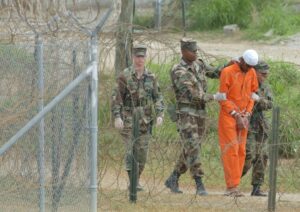
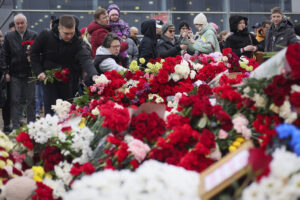
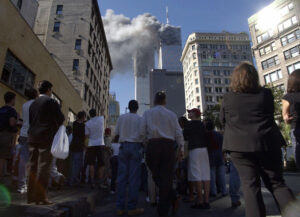

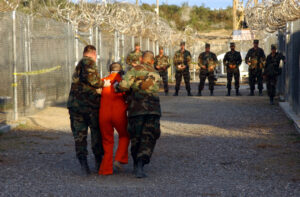
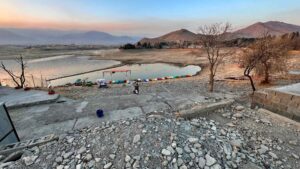
You need to be a supporter to comment.
There are currently no responses to this article.
Be the first to respond.